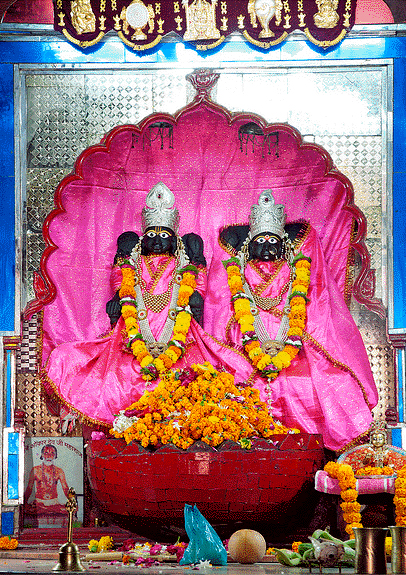Re: Tamil speaking Rama bhaktas - a treat!
Hajipur (Vishala Nagaram) - Ikshavagu vamsha's king Vishala had built this city. This town is located near Patna. When Sri Rama visited this city on his way to Mithila (Janakpuri) in Nepal, King Sumathi invited Rama (and Lakshmana) with great reverence for the lads. There exists a temple in this place that contains the footprint of Sri Rama. Rama and Lakshmana stayed here on the 13th night after they left Ayodhya. 'Ram Chowda' is the name of the temple that enshrines Sri Rama's footprints, Rama is said to have stood here on his visit to King Sumathi's Vishala Nagar. From this place, Sri Rama is
said to have left directly to Mithila.
Sri Velukkudi Krishnan visits the following places before going to Mithila which Sri Rama did not visit:
1. Sonepur - This is the place where Ganges and Kantaki rivers meet together. This place had been the site of the famous 'Gajendra Moksha' of olden times.
2. Saligramam - The place where we get the Sri Murthis for our daily aradhanas! Mukthinath - Shaligrama is located on the banks of Kantaki. Kantaki begins her journey at Nubine-Himal glacier. She is also known as 'Kala Kantaki' or 'Narayani' because she is black in color. At the bed of Kantaki, Shaligrama stones are found.
3. Sitamari - The birthplace of Sita, located in Dharbhanga district, Bihar (near the borders of Nepal), where Sita emerged from the ground. This place is the yagna-shala for king Janaka, where he performed yagnas. There are 2 temples dedicated to Sita at this place, one at either corner of the yagna-shala. The Hanuman at the Sita-Rama temple is decorated uniquely every single day. Sita and Rama did not visit here after marriage, as this is just the birthplace of Sita. there was a king called nimi. He requested Vashishta to perform a yagna for him for the birth of progeny. Vashishta told him to wait as he had other duties at the time. Nimi couldn't wait patiently, instead he started performing yagna with other rishis. Vashishta cursed him to go 'bodyless' or 'Videha'. Since this Sitamari is under the province of Videha king, Sita is known as 'Vaidehi'. Though he became bodyless, the other rishis had performed yagna for him to get progeny and this has to take effect. Therefore, the other rishis churned through the bodyless Videha (like devas did in Samudra manthana) and brought forth his child - Janaka. Since Sita is born to Janaka, she earned the name of Janaki.
Next destination is Janakpuri in Nepal, the site of Rama-Sita marriage.
jai hanuman gyan gun sagar jai kapis tihu lok ujagar





 Reply With Quote
Reply With Quote



Bookmarks